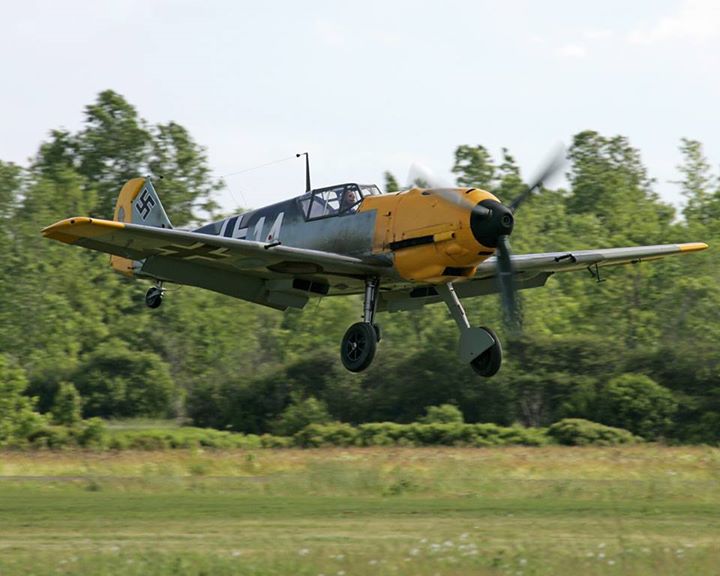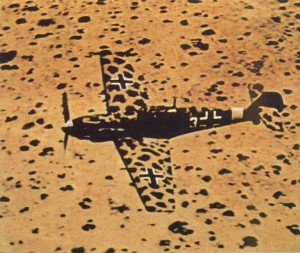The Messerschmitt Bf-109E (or Me-109E*) was the mainstay fighter aircraft of the German Luftwaffe (Air Force) during the Battle of France and the Battle of Britain. Although it was produced in many different versions, for me the definitive ‘109 is the ‘E’ version, or the ‘Emil’ as its crews used to call it.
More Bf-109s were produced in its ten years of production than any other aircraft in history, a testimony to its versatility, performance and reputation. Most of the pictures of the Emil on this page are of the example called ‘White 14’ which lives in Canada, but is reputed to be moving to the UK.
The design philosophy of fighter aircraft is displayed perfectly in the Bf-109. When designing a fighter aeroplane, performance is key. In order to get good performance, you need as light a weight as possible, combined with as much power as possible. So the solution is to get a tiny airframe and bolt a giant engine on to it, just like you would in, say, a sports car, and this design philosophy has continued to the present day even into the era of jet fighters. The ‘109’s engine, then, occupies most of that big yellow volume at the front of the aeroplane in these pictures – so you can see where all that power lives! And aircraft like the Hurricane and Spitfire are no different in this regard. A giant powerplant and a light airframe – it does the trick, all right.
The Bf-109 was the natural enemy of the Spitfire, and the story of the two aeroplanes during the War is one of development and counter-development; they were pretty well evenly-matched for much of the War. Apparently, because of the narrow-track landing-gear, though, the ‘109 was reputedly quite tricky to land.
Next is a particularly remarkable, classic photo of the 109E. The type was used in the Western Desert campaign in North Africa, and instead of the grey/green/olive camouflage scheme used in Western Europe, the scheme was made to match the appearance of the scrubby-surfaced desert.
Fascinating, isn’t it? Of course, because the aeroplane would be moving, it would be slightly easier to spot than the picture suggests – not quite invisible! – but it’s still a really good camouflage scheme.
So, there she is, the Bf-109, a lovely little aeroplane with, of course, a sinister purpose underlying her simple beauty. A Beautiful Destroyer.
*Note: The Bf-109 was also known as the Me-109, but Bf-109 was more commonly used. ‘Bf’ was an abbreviation for ‘Bayerische Flugzeugwerke’, or Bayerische aircraft works. The terms ‘Bf’ and ‘Me’ were used more or less interchangeably for the Me-109 and Me-110 aircraft; however, later designs such as the Me-163, Me-323 and Me-262 did not use the Bf designation.





Not too many 109s still flying, alas.
My impression of the 109 is that it was an impressive plane as far as performance, but I felt it fell short in terms of aesthetics. (The Spitfire is – in my opinion – the prettiest fighter of the era.) Now the Messerschmitt 262, on the other hand, is a thing of beauty.
Funny you should say that! The Me262 is on my list of aircraft to put in this series….watch this space!
And yes, the Spit is my favourite too – that’s why she’s first in the series 🙂
Thanks for commenting!